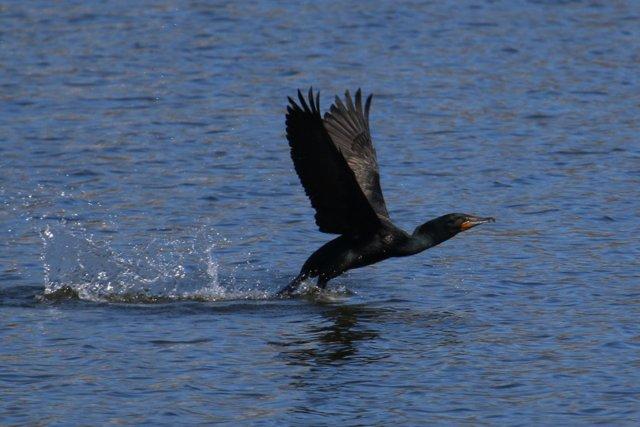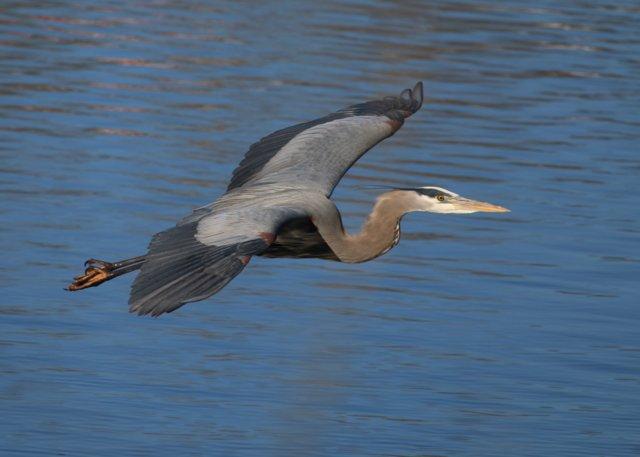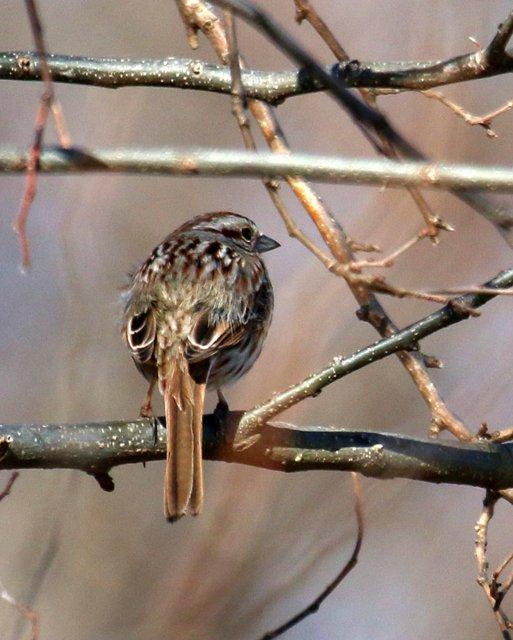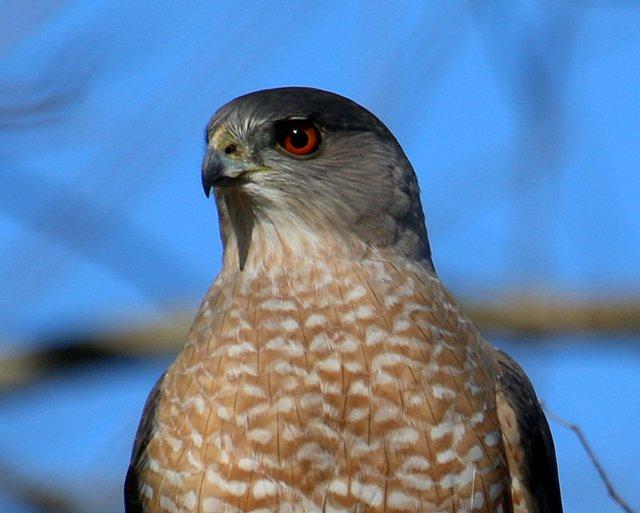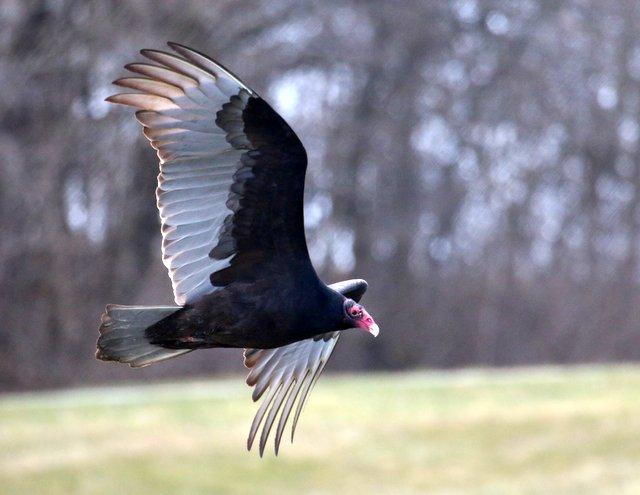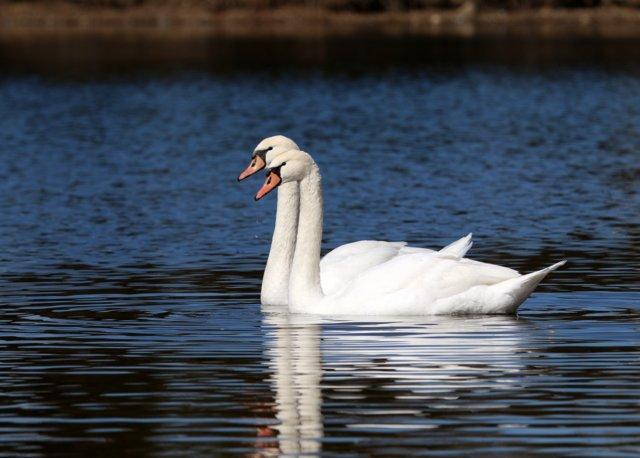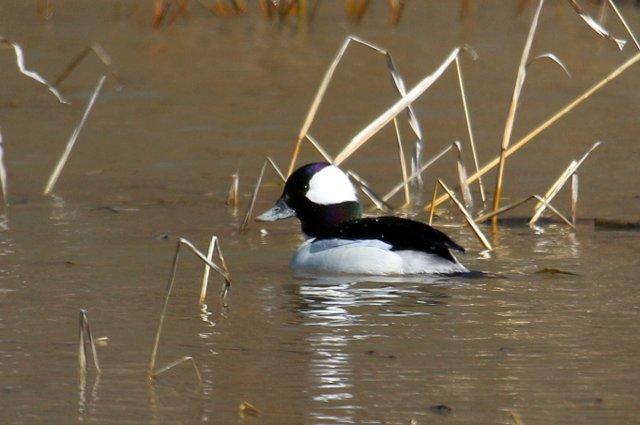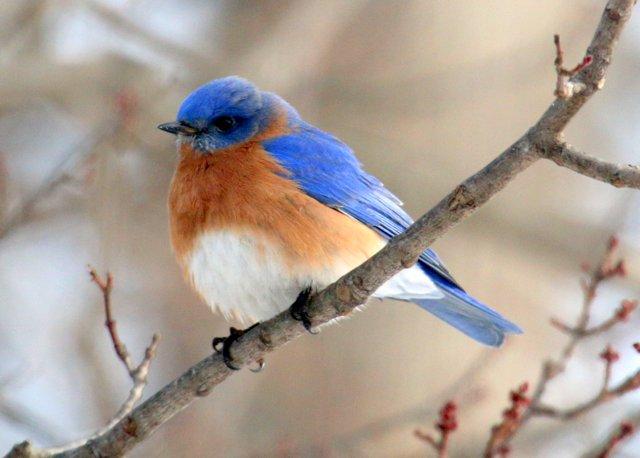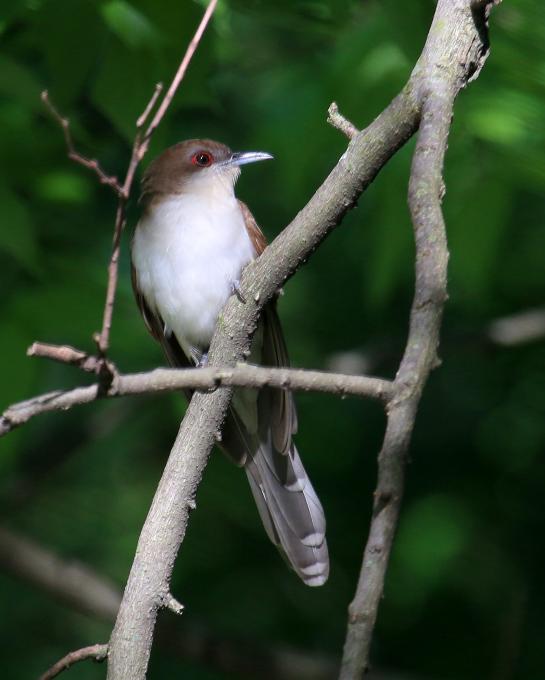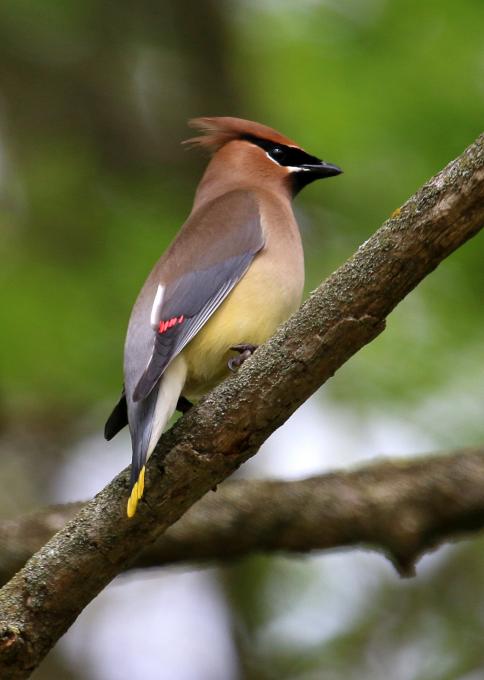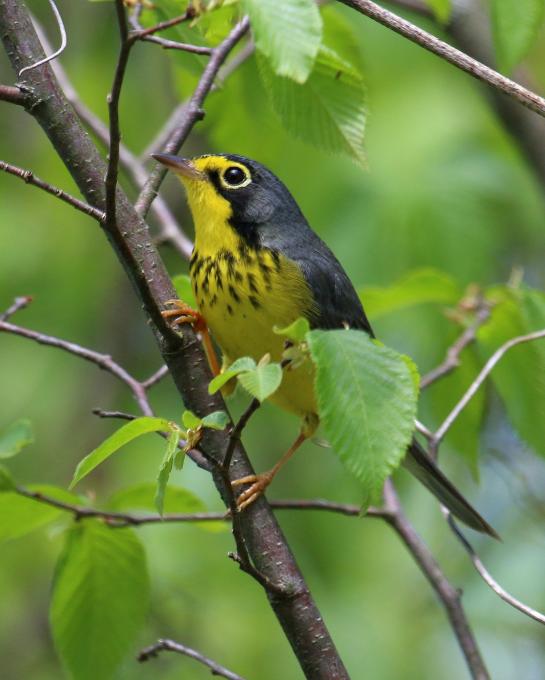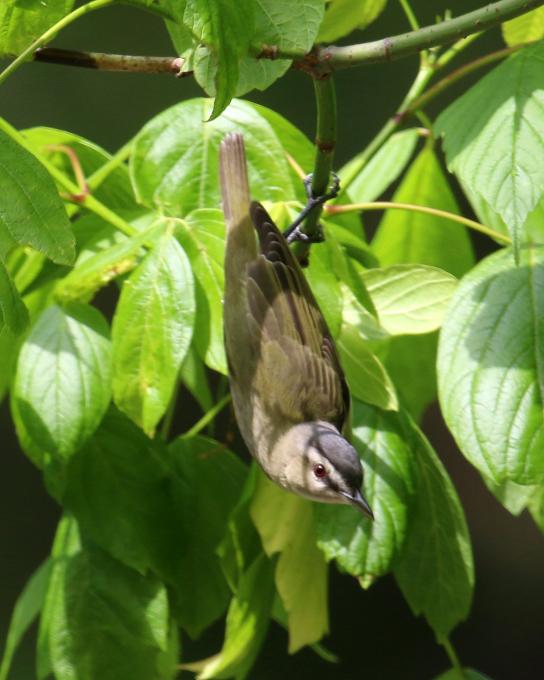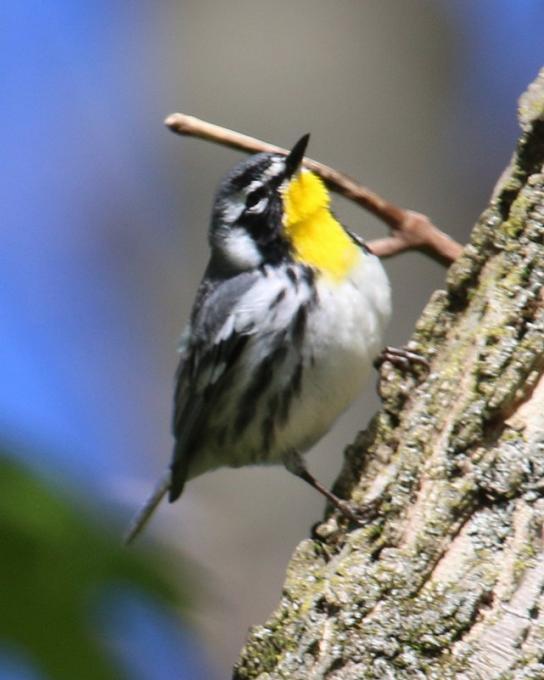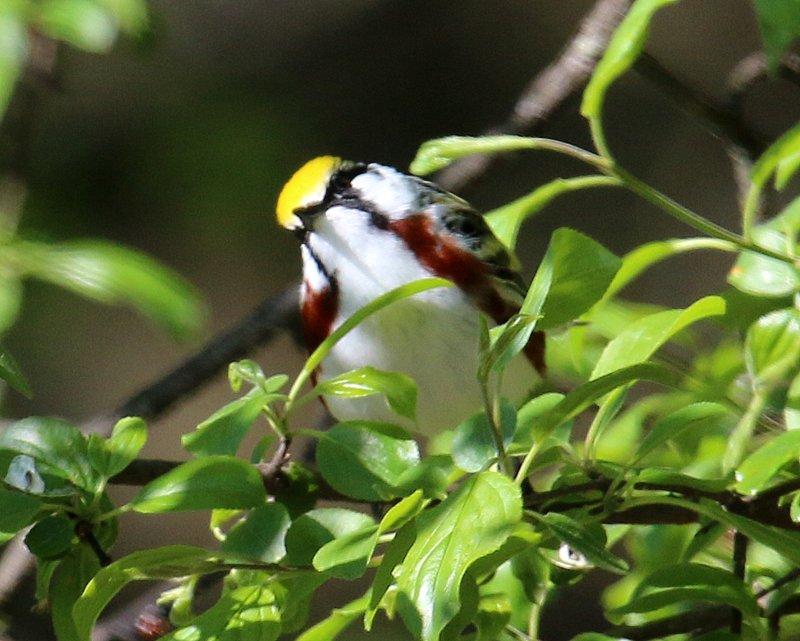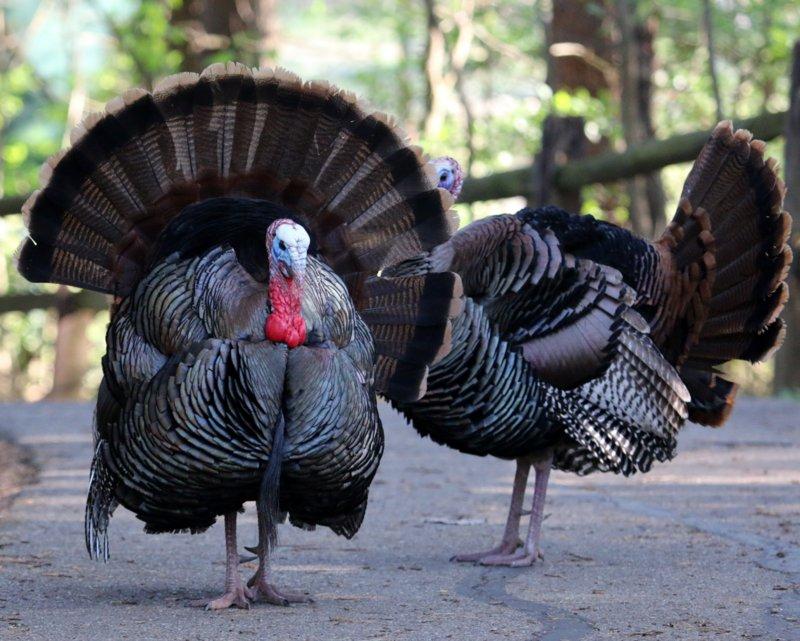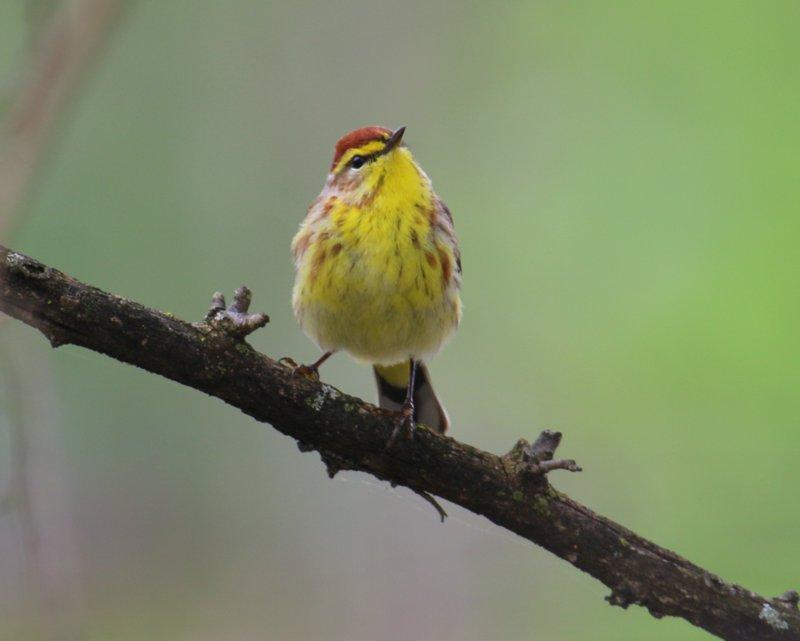Danya
Forum Replies Created
Viewing 20 posts - 1 through 20 (of 20 total)
-
DanyaParticipantI think the 1/1250 shutter speed was key to make this image of a Neotropic Cormorant taking off work. The sharpness of the water behind adds to the feeling of capturing a single moment. The Great Blue Heron was just nicely lit by the evening sun.

 in reply to: Practice Capturing Birds in Flight #804190
in reply to: Practice Capturing Birds in Flight #804190 -
DanyaParticipantApril 21 we visted Pickerington Ponds Metro Park and were happy to see a Cooper's Hawk. It was far away with many branches and in deep shadow, so the few photos my husband got were unremarkable. Later, he approached a tree with a well lit Song Sparrow he thought perhaps might show a better side. When the sparrow suddenly flew, the hawk appeared on the branch just above, a few meters away, "ready for her close up."

 in reply to: Practice Getting Creative and Telling Stories #804188
in reply to: Practice Getting Creative and Telling Stories #804188 -
DanyaParticipantI love this photo!in reply to: Practice Matching Your Gear to Your Goals #802827
-
DanyaParticipantRule following: the Pileated Woodpecker obeys the rule of thirds and is also in focus against a blurred background like the Turkey Vulture. Rule bending: for the Mute Swans, we used f/5 so the farther one is still barely in focus, but they are basically centered rather than at a cross points, which gives them space to travel.


 in reply to: Practice Crafting Great Bird Photos #801124
in reply to: Practice Crafting Great Bird Photos #801124 -
DanyaParticipantMy husband and I sat for a bit over a half hour at Greenlawn Cemetery in Columbus, Ohio. There's a place there with several birdfeeders so we brought our chairs and camped out nearby. We watched many birds come to the feeders. There were many Red-winged Blackbirds that have been arriving over the past two weeks. All the birds would suddenly scatter though when a Cooper's Hawk flew by. This happened twice while we were there. It took several minutes after the hawk gave up before they would return to the feeders. Afterwards, we went to another location, the OSU Wetlands, to check it out for later this spring. We saw a Bufflehead duck. Below are three photos from yesterday - a Pine Warbler at the feeder, the Cooper's Hawk, who was scaring all the other birds, and the Bufflehead.


 in reply to: Practice Gaining an Audience with Birds #799802
in reply to: Practice Gaining an Audience with Birds #799802 -
DanyaParticipantI chose the Eastern Bluebird to research, and my husband chose the White-breasted Nuthatch, which is becoming his favorite bird at our feeders. We only get the bluebirds at our feeders in Ohio when there's snow on the ground every year. I learned that they like mealworms. Perhaps they have trouble finding food when there's so much snow, and that's why they are coming to our feeders now. The snow is melting now, but my husband was ready with his camera when we learned that we would be getting a big snowfall, and sure enough a family of them showed up. The nuthatch is a frequent visiter. One tip to getting him is to know that he will be facing down the tree, will fly in quickly for a seed or peanut, and then be off to the tree to eat it. Here are our best photos from the last two weeks of each bird.

 in reply to: Practice Understanding Birds for Better Photos #797378
in reply to: Practice Understanding Birds for Better Photos #797378 -
DanyaParticipantActivity 1: All of nature matters to me - the environment, trees, plants, animals, fish, birds! I already knew that birds are important to the environment; however, this course has made me get out and observe them more. And, the more I observe and know about birds the more appreciative I am of them. Activity 2: I do all of the seven actions already except for having numerous native plants and purchasing shade-grown coffee for my husband. I will certainly purchase shade-grown coffee from now on! We are currently doing research on installing a rain garden in our backyard since we have pooling water, despite having put in yard drains a few years ago. When we do, we will be sure to plant native Ohio plants, not the ornamentals. We are also considering a bird bath to go along with our three feeders. I listened to a webinar from the Ohio Historical Connection about bird migration, and the number one suggestion from the host was to plant native trees, especially oaks. We have two oaks already, but I would be interested in planting another native tree to soak up all the water we get in the corner of our yard. Activity 3: We are in our early 50s and definitely have noticed a reduction in bird populations. I remember seeing swarms of birds, especially during fall migration, growing up in eastern Ohio. Activity 4: We will be planting native plants in our new rain garden, purchasing shade-grown coffee, doing the eBird essentials class, and continuing to get out more to observe birds. (My husband has taken so many pictures since we began our twice weekly bird watching at area metro parks since mid-April that I will need to make a Shutterfly album entitled, Spring Migration 2020!) This course and the birding has really helped my mental heath during this pandemic. Thank you!in reply to: Activities: Helping Birds in Your World #705370
-
DanyaParticipantActivity 1: We have been using the Merlin app and even tried the eBird list this weekend. We love Merlin, especially the feature where one can take a photo and have Merlin identify the bird from it. I tried putting in notes into my eBird list as I was making it. However, sometimes I was so interested in the next bird that I skipped it. Today we witnessed an Eastern Towhee doing a double scratching maneuver in the leaves, similar to the Fox Sparrow foraging back in unit 2. Amazing! Activity 2: I have signed up for the eBird rare bird alerts and get them daily. It definitely fuels the desire to get out there and try to find rare birds. I would love to find the Connecticut Warbler, but so far, I've had no luck. I will post a photo here if I see one. Here are three bird photos from this weekend: a Chestnut-sided Warbler, a Black-billed Cuckoo, and a Cedar Waxwing, my favorite local bird.


 in reply to: Activities: Keeping Track of Your Birdwatching #705215
in reply to: Activities: Keeping Track of Your Birdwatching #705215 -
DanyaParticipantActivity 1: We visited two of our favorite birding spots over the weekend. The first one is Duranceau Park & Griggs Reservoir and the second is Walnut Woods Metro Park. Both are in Columbus, Ohio. The first area is the best area we've found to spot warblers, Baltimore Orioles, and river birds such as the Great Blue Heron. The second area has two different sections - one section is meadow and open fields with ponds and the second section has tall trees, both deciduous and pine. We have found Field Sparrows, Red-wing Blackbirds, Tree Swallows and numerous woodpeckers here. By the way, I observed a Great Blue Heron do the same side leg and wing stretch. I never noticed any bird do this before until this course. We also are loving the Merlin app! My husband finally broke down and bought a good pair of binoculars on Amazon so he is much more interested now in birding with me than before. I am noticing birds so much more now than I ever did before. Activity 2: Both the Roger Road location in Arizona and the Sevenoaks location near London feature pond birds whereas the Mt. Lemmon and Down House locations have forest birds (and especially at Mt. Lemmon raptors). These last two locations have a greater diversity of birds, not just waterfowl. Below are three photos of birds from our weekend birding, including a Canada Warbler, Indigo Bunting, and Red-eyed Vireo.


 in reply to: Activities: Exploring Bird Habitats #702787
in reply to: Activities: Exploring Bird Habitats #702787 -
DanyaParticipantActivity 1: We have noticed a lot of Blue-gray Gnatcatchers on our walks lately. They are so difficult to photograph because they constantly moving about eating insects. Activity 2: We have a lot of different birds that come to our bird feeders and each species does seem to have its own style. The Downy Woodpecker always goes to the suet and is not shy about sticking around; the Red-bellied Woodpecker and Blue Jays take a peanut and leave to eat it on our maple tree; the European Starlings, our least favorite birds, come in a flock, crowd out the other birds, and make a mess by spilling the bird seed all over the patio. Activity 3: We are beginning to notice a few more bird songs than before. We can identify the Cardinals, Blue Jays and Gray Catbirds immediately. We were treated to a wonderful song by a Wood Thrush recently.


 in reply to: Activities: Noticing Behaviors #700819
in reply to: Activities: Noticing Behaviors #700819 -
DanyaParticipantYes, that is an Orchard Oriole.in reply to: Activities: Exploring Birds #698487
-
DanyaParticipantActivity 1: The migration videos show me why I always see Cardinals but only have a limited window to see Blackburnian Warblers, Scarlet Tanagers, and Yellow-bellied Flycatchers and will never see a Western Tanager or Rufous Hummingbird unless I vacation out west. Activity 2: Three year-round resident birds for my area (Columbus, Ohio) are Eastern Bluebird, Carolina Chickadee, and White-breasted Nuthatch. Three birds that only live in my area for part of the year are Eastern Kingbird, Indigo Bunting, and American Redstart. Activity 3: Both the Male American Goldfinches and Common Loons have more vivid coloring in the summer months than in the winter. Since I have Goldfinches at my feeders year-round, I have noticed this with them. Activity 4: I don't just have one favorite birding spot, but I know I can count on seeing Yellow Warblers, Yellow-rumped Warblers, and Baltimore Orioles right now. In six months I could see Cedar Waxwings, Yellow-bellied Sapsuckers, and Ruby-crowned Kinglets. I can see Wild Turkeys year-round and right now they are very easy to spot at Blendon Woods Metro Park.
 in reply to: Activities: Different Seasons, Different Birds #698479
in reply to: Activities: Different Seasons, Different Birds #698479 -
DanyaParticipantWe spent the day at Griggs Reservior and then Walnut Woods Metro Park (Columbus, Ohio). My sister and 11 year old nephew went to Griggs with us to try out birdwatching. Ian, my nephew, was good at spotting birds with his young eyes but got bored easily. Oh well! We saw barn & tree swallows, Baltimore Orioles, Yellow-rumped Warblers, Yellow Warbler, Palm Warbler, Eastern Kingbird at Griggs. My huband and I then saw House Wren, Orchard Oriole, Cowbirds, Eastern Towhee and Field Sparrows at Walnut Woods. We used Merlin a lot. At Walnut Woods we were walking and saw a bird in the distance. We couldn't make it out very well because the forest was a bit dark so we used the Merlin app to narrow down what it might be. I suspected that it was an Eastern Towhee so we played that song on our phone. Immediately, the bird flee to a tree next to us and sang back to us. It was so close! I guess it thought it had found a mate or something. See our picture below (plus a few more from yesterday's outing.)


 in reply to: Activities: Local Bird Exploration #697864
in reply to: Activities: Local Bird Exploration #697864 -
DanyaParticipantYour photos make me want the visit India for bird watching!in reply to: Activities: Bird ID Practice #696890
-
DanyaParticipantIt is a Cedar or Bohemian Waxwing.in reply to: Activities: Exploring Birds #696186
-
DanyaParticipantActivity 1: Red-winged Blackbird from our bird feeder and Common Grackle from the Cornell feeder . (The Merlin app is easy to use!) Activity 2: Northern Cardinal, Red-bellied Woodpecker, Downy Woodpecker Activity 3: Downy Woodpecker likes to peck at my suet. The Red-bellied Woodpecker prefers the small bird feeder. He latches onto the wires and picks out a peanut from the birdseed mix and then flies away. He never stays for long. The Northern Cardinal is not so much in a hurry to leave. Sometimes he pecks at bird seed on the ground which has fallen and sometimes he gets it from the large bird feeder. Activity 4: Eastern Bluebird (Bird ID): bigger than a sparrow and smaller than a robin; songbird with bright blue back, head and wing markings (if a male), an orange throat and breast and white belly; likes open fields, bird boxes and perches on trees and posts; common in my area but only comes to my bird feeders when it is winter and there's snow on the ground; it has a few distinctive calls and a song that starts loud and distinctive and then gets lower and softerin reply to: Activities: Bird ID Practice #695243
-
DanyaParticipantGreat photos! I love the Cedar Waxwing and I have only ever seen it at Magee's Marsh on Lake Erie. Hopefully, I will see it again soon.in reply to: Activities: Exploring Birds #694949
-
DanyaParticipantYou might try to take a picture through someone else's scope with your phone. I have never been good with identifying many birds by their songs. I try to get a few photos and go back to my field guide to identify the bird later if I don't know. Someone with a scope though will tell you the bird's name and then you can write it down in a small notebook. Having a scope is typically a sign of a serious or advanced birder!in reply to: Activities: Exploring Birds #694948
-
DanyaParticipantYes - it's a Chipping Sparrow.in reply to: Activities: Exploring Birds #694945
-
DanyaParticipantHi! I'm from Columbus, Ohio and my favorite bird from the Wall of Birds is, without a doubt, the Lilac-breasted Roller because I became a birder after seeing this bird on vacation in South Africa. Before then in the trip, I was only concerned about seeing lions, leopards, rhinos, elephants, etc., but this little bird made me begin to notice the birds too and started my slow journey into birding. I have so many favorite local birds that it is difficult to pick. However, I have been getting out to Greenlawn Cemetery for the past two weekends with the other birders from total beginners to the guys arriving from two hours away and setting up camp at the pond. Since Magee's Marsh in northern Ohio is currently closed due to the pandemic, Greenlawn has become a local hangout to spot warblers. Here is a photo from last week, taken at Blacklick Metro Park, of a pair of Wood Ducks and a photo of a Yellow-rumped Warbler taken at Greenlawn Cemetery from this morning.

 in reply to: Activities: Exploring Birds #694922
in reply to: Activities: Exploring Birds #694922
Viewing 20 posts - 1 through 20 (of 20 total)
